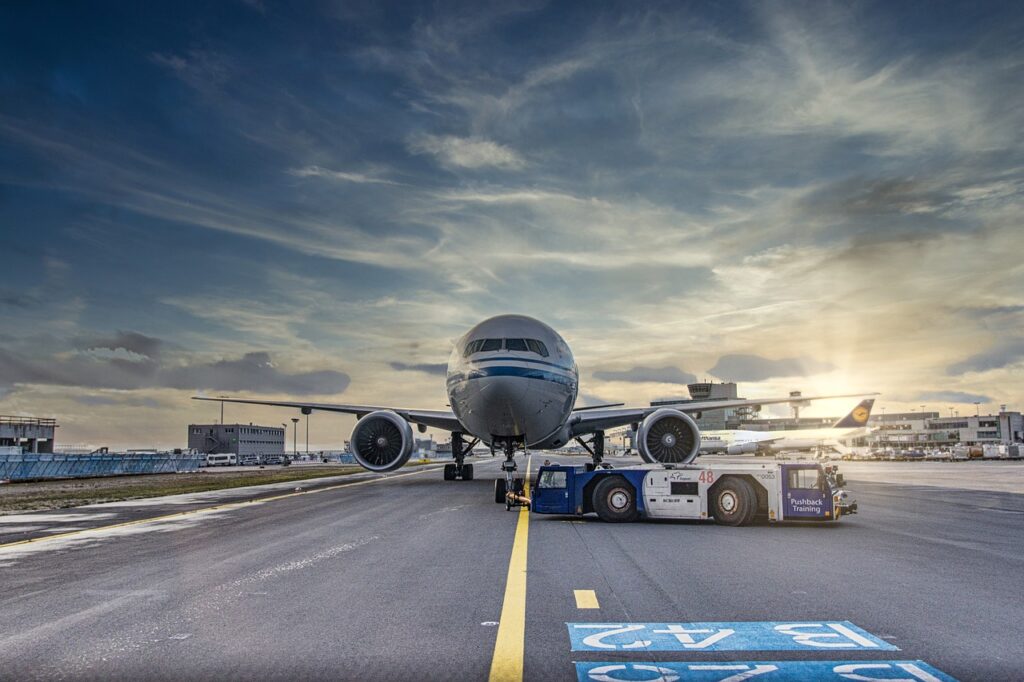In this article, we take a look at the significance of bird strikes in the aerospace industry, and how thorough analysis helps reduce the chances of catastrophic failure should one of our feathered friends hit an aircraft.
What Is a Bird Strike?
A bird strike is the term used to describe what happens when birds come into contact with an aircraft in flight. This might be a single bird or a flock of birds.
As birds don’t typically fly at high altitudes, the majority of bird strikes tend to take place during take-off or landing, which can make evasive manoeuvres difficult or impossible due to the reduced speed of the aircraft and the landing gear being engaged.
Bird strikes typically impact aircraft wings or engines but can affect any part of a plane if struck, including the windshield, nose, or fuselage.
Bird strikes are a relatively common occurrence in aviation. According to data published by the Civil Aviation Authority, in 2022, there were 1,395 confirmed bird strikes in the UK alone. The majority of these don’t result in damage to the aircraft, however, bird strikes can potentially have significant consequences both for operations and for the safety of passengers and crew on board.
How Do Birds Affect Aeroplane Safety?
Whilst the vast majority of bird strikes don’t result in damage, that doesn’t mean they’re harmless.
Aeroplanes that have been struck will often need to abort their take-off or landing. They’ll frequently need to return or divert to the nearest airport as a precaution to check for Barely Visible Impact Damage (BVID). This can result in flight delays and cancellations, which can be inconvenient and costly for both passengers and airlines.
Occasionally, things can be even more serious, leading to catastrophic damage that jeopardises the safety of those on board, such as engine failure requiring immediate emergency landing.

This was the case in the now famous incident of the ditching of US Airways flight 1549 on the 15th of January 2009. Shortly after take-off, the flight hit a flock of birds, causing dual engine failure. Fortunately, the pilots were able to avoid disaster by successfully gliding the plane into the Hudson River, saving the lives of all 155 people on board. The incident is now considered to be the most successful ditching in aviation history, with all the crew on board at the time being awarded medals for their heroic actions. Seven years later, the incident was dramatised in the hit film, Sully: Miracle on the Hudson starring Tom Hanks.
Other flights that have encountered a bird strike have not been so fortunate, and since 1988 almost 300 people worldwide have lost their lives as a direct result of bird strikes.
What Is Bird Strike Testing?
Bird strike testing is a safety measure carried out to ensure that an aircraft is capable of completing a flight after sustaining structural damage due to a bird strike. In simple terms, would the damage sustained be so great that the aircraft could disintegrate in the air? The damage a bird strike would cause needs to be quite insignificant to allow the plane to safely land.
Two areas need to be considered in bird strike testing; a bird (or birds) hitting the fuselage, or birds being ingested into an engine. Fortunately, at Airframe Designs we deal with the former as the latter involves some very interesting test methods, chiefly firing bird carcasses into a running jet engine!
Our methods are a little gentler and tend to happen as simulations. We use calculations, Finite Element Modelling (FEM) and Python scripting to work out the strength of aircraft structures. From there, we calculate the force that would be exerted on the structure in the event of a bird strike and then determine whether this force would lead to the failure of the structure.
Even the process of working out how much force would be exerted on a structure by a bird strike can be very complex as there are many variables. For example, is one bird hitting or many? The weight of the bird, where and at what angle it hits the plane can also all have different outcomes. Hence the need for computer programs to run multiple simulations.
A Case Study
Airframe Designs was tasked to carry out a bird strike assessment of a Cobham antenna installed on the forward fuselage crown on a BOEING 757-200 aircraft.
The aim was to assure the Federal Aviation Administration (FAA) and European Union Aviation Safety Agency (EASA) that the installation of said antenna would meet the stringent requirements necessary for discrete source damage, i.e. the potential structural damage sustained from a bird strike.
Through undertaking the assessment, Airframe Designs was able to identify the most likely points of structural failure and provide the client with the details they needed to formulate a Certification Plan and proposed Means of Compliance. This ultimately enabled the aircraft to be recertified, and able to continue flying safely.
Certification Standards For Bird Strikes
Under current aircraft certification standards, both airframe and engine resistance to bird impact must be demonstrated. The standards are set out by the Federal Aviation Authority (FAA) and European Union Aviation Safety Agency (EASA), and require that an aeroplane must be capable of continued safe flight and a subsequent normal landing after sustaining structural damage as the result of an impact with a 4-pound bird at likely operational speeds at altitudes up to 8,000 feet, as per FAR/CS 25.571 (e)(1) i.e.
Airframe Designs
We hope this has helped to explain what a bird strike test involves and why it’s so critical.
With over a decade of specialist engineering expertise, Airframe Designs is highly experienced in providing engineering services and solutions for clients in the aviation, defence, and space sectors.
You can find out more about our analysis capabilities here. Alternatively, should you wish to speak to us about fatigue analysis or damage tolerance evaluation, please don’t hesitate to contact us.


